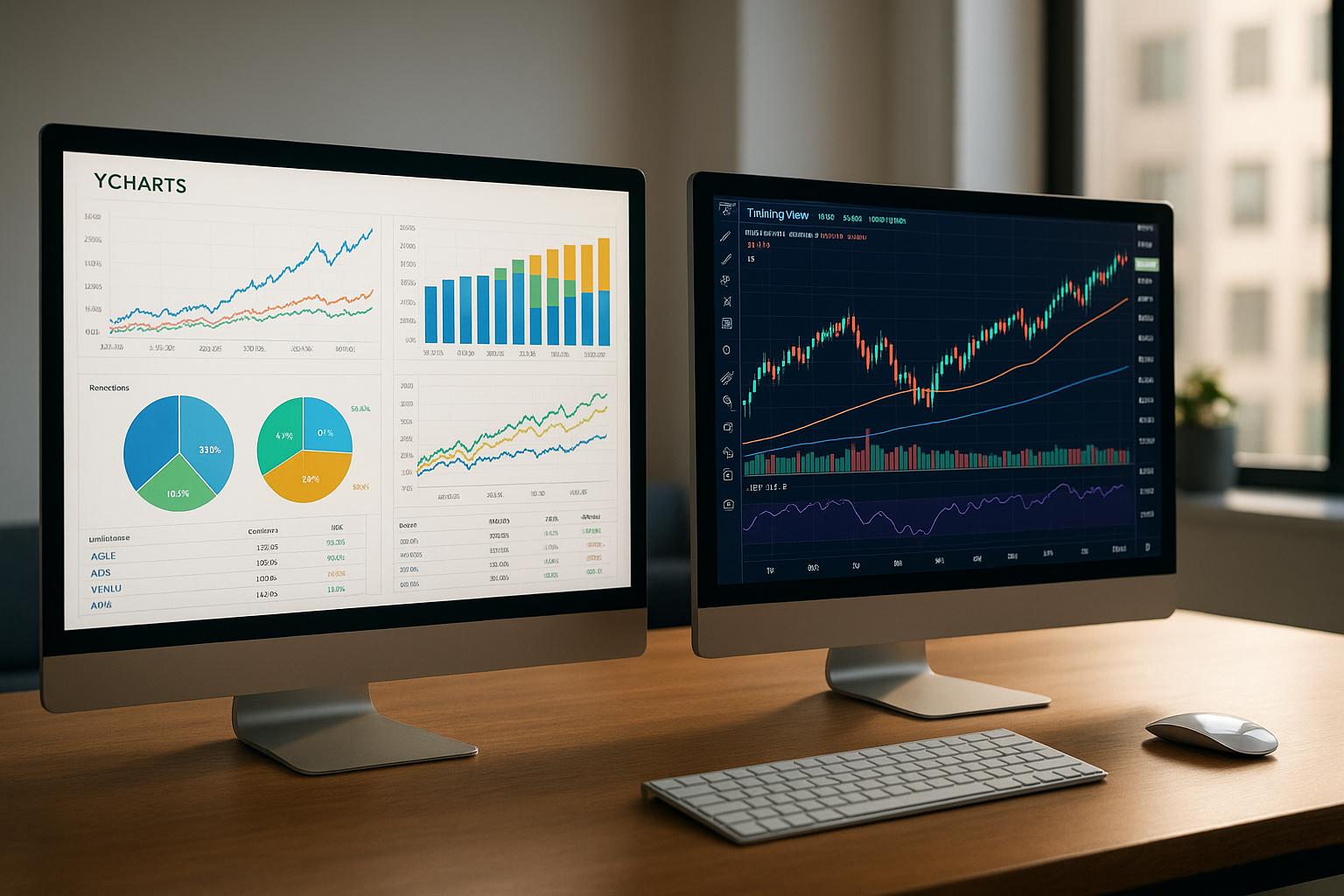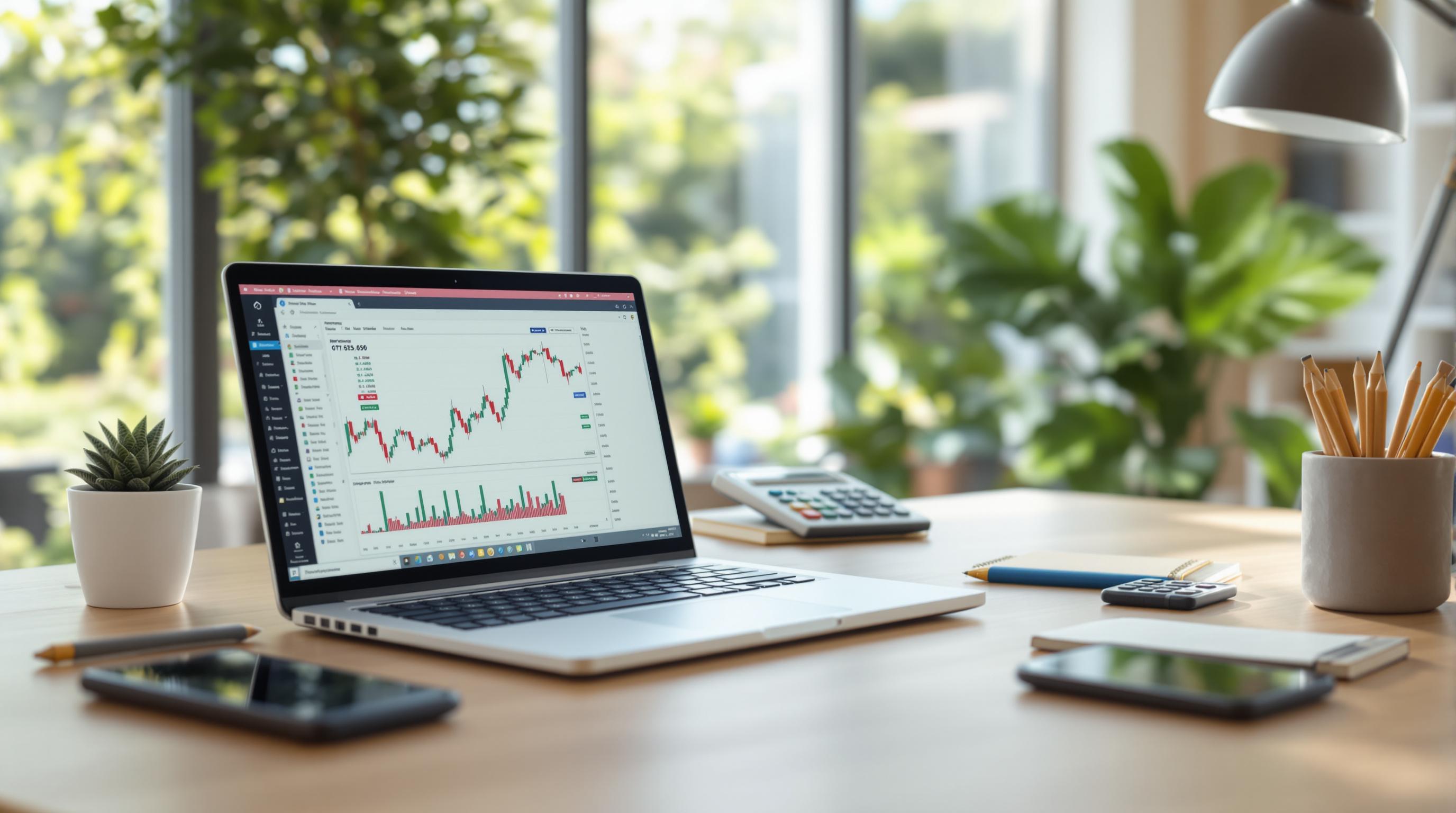Economic event alerts are essential for traders who want to stay ahead of market movements. These alerts notify you about key economic data, central bank decisions, and policy changes that can impact markets. Here’s what you need to know:
- Why They Matter: Alerts help you react quickly to events like interest rate changes or inflation reports, which often cause market volatility.
- How to Use Them: Platforms like TradingView and Oanda let you set up real-time notifications for critical events like Non-Farm Payroll (NFP) reports, Federal Reserve decisions, and CPI releases.
- Delivery Methods: Get alerts via SMS, mobile push notifications, or email. SMS is fastest for urgent updates, while mobile push works well for active traders.
- Trading Strategies: Use alerts to prepare pre-event setups, manage risks, and plan entry/exit points. After the event, review outcomes to refine your strategy.
- Best Tools: Popular platforms include TradingView Pro, Koyfin, and Stock Rover. Choose based on features like real-time alerts, customization, and economic calendars.
Quick Comparison of Popular Alert Tools
| Feature | TradingView Pro | Koyfin | Stock Rover |
|---|---|---|---|
| Real-time Alerts | Yes | Yes | Yes |
| Customizable Alerts | Extensive | Moderate | Moderate |
| Economic Calendar | Comprehensive | Basic | In-depth |
| Mobile Notifications | Push, SMS, Email | Push, Email | Email only |
| Pricing | Varies by plan | Varies by plan | Varies by plan |
Takeaway: Economic alerts help traders act on market-moving events. Choose the right platform, set up alerts, and refine your strategies for better results.
Alert Setup Guide
Platform Selection
TradingView is a popular choice for setting up economic event alerts. It provides real-time data from global markets and includes an advanced alert system. With its Pine Script programming feature, you can customize alerts to fit your trading needs.
Oanda, through MetaTrader 4, also offers strong event tracking tools. These include order book analysis and position ratios, which can help traders make better decisions based on economic events.
When picking a platform, weigh these factors:
- How well it integrates with your current trading tools
- Whether it covers the economic indicators you follow
- The level of customization available for alerts
- The accuracy and speed of its real-time data
- Subscription costs and pricing structure
Once you've chosen your platform, the next step is setting up alerts for specific events.
Setting Up Major Event Alerts
Here’s how to configure alerts for key economic events:
-
Non-Farm Payroll (NFP) Alerts
Schedule alerts for the monthly release at 8:30 AM Eastern Time, typically on the first Friday of each month. Set these alerts to repeat monthly and include custom thresholds. -
Federal Reserve Decisions
Set up alerts for both policy decision announcements and the follow-up press conferences. Use the FOMC meeting schedule to time these notifications. -
Inflation Reports
Configure alerts for Consumer Price Index (CPI) releases. Use the platform's economic calendar to set threshold values for these alerts.
Alert Delivery Methods
Once your alerts are configured, decide how you’ll receive notifications to ensure you stay informed in real time.
| Delivery Method | Ideal For | Response Time | Reliability |
|---|---|---|---|
| SMS Alerts | Urgent trades | Less than 1 minute | Very High |
| Mobile Push | Active traders | 1–2 minutes | High |
| Passive monitoring | 2–5 minutes | Medium |
For better alert management:
- Use multiple delivery methods for critical events.
- Test your alerts during non-trading hours to ensure they work properly and align with market timings.
- Set up backup alerts on another platform to avoid missing key updates.
Trading with Economic Alerts
Pre-Event Trading Setup
Once you've set up your alerts, it's time to prepare for potential market movements by analyzing your positions and managing risks effectively.
-
Position Assessment
Use tools like TradingView for technical analysis and Stock Rover for fundamental insights. SpotGamma's volatility dashboards can help you estimate possible market swings and determine appropriate position sizes. -
Risk Analysis
Leverage finviz's correlation algorithms to identify assets prone to volatility. Make sure to set strict stop-loss levels to protect your trades. -
Scenario Planning
Tradytics' AI-powered simulations allow you to anticipate market reactions and fine-tune your entry and exit strategies.
With these steps, you'll be ready to tackle market shifts as economic alerts start influencing prices.
Event Trading Tactics
When the event begins, stick to these strategies to navigate the market effectively:
- Take a moment to let the market process the new data before making your move.
- Keep an eye on real-time alerts and adjust your trades as conditions evolve.
- Wait for clear trend signals before scaling up your positions.
For precise execution, consider using TradeStation for its advanced order options or Webull for commission-free trades.
After the event, reviewing your trading decisions is key to improving your approach for future opportunities.
Post-Event Market Review
Once the dust settles, analyze your performance to identify areas for improvement. Here's how:
- Compare how the market actually reacted to your pre-event scenarios.
- Use StockCharts to document price movements and assess volatility levels.
- Review your position management choices and their outcomes.
Tools like Trend Spider can provide automated technical analysis to spot new trends, while Hedgeye's research offers insights into broader market developments. These reviews will help refine your strategies for the next trading event.
How To Use The Economic Calendar To Identify High Probability Trading Setups
sbb-itb-2e26d5a
Alert Tools Review
Choosing the right alert tool can make a big difference in your trading performance. Economic event alerts are a key part of staying ahead in the markets. Below, we’ll break down some important features and selection tips to help you pick the best platform.
Tool Features Comparison
Different platforms offer various features to match your trading style. Here's a quick comparison of three popular economic event alert tools:
| Feature | TradingView Pro | Koyfin | Stock Rover |
|---|---|---|---|
| Real-time Alerts | Yes | Yes | Yes |
| Customizable Alerts | Extensive customization | Customizable options | Customizable alerts |
| Economic Calendar | Comprehensive calendar | Basic economic calendar | In-depth analysis-based calendar |
| Mobile Notifications | Push, SMS, and Email | Push and Email | Email only |
| Data Export | Various formats | Various formats | Various formats |
| Pricing | Varies based on plan | Varies based on plan | Varies based on plan |
This table highlights the differences to help you choose a tool that fits your needs.
Selection Criteria
Matching the right alert tool to your trading strategy requires careful consideration. Here are some key factors to evaluate:
Data Accuracy and Speed
Fast and accurate notifications are essential during fast-moving market conditions. Your platform should deliver alerts as soon as economic events occur.
Customization Options
Look for tools that let you fine-tune thresholds for economic indicators. This ensures you can filter out irrelevant data and focus on what matters most.
Testing Capabilities
Some platforms allow backtesting, letting you test your alert strategies using historical data. This feature can help you refine your approach before relying on live alerts.
Best Investing Tools Directory Benefits
The Best Investing Tools Directory simplifies the process of finding the right alert platform. It includes detailed reviews that cover:
Real-time Performance
Each tool is assessed for how quickly it delivers alerts, ensuring you can meet your specific timing needs.
Feature Analysis
You’ll find comparisons of customization options, data sources, and integrations to help you make informed decisions.
User Experience
Real user feedback on reliability and platform stability is included, giving you confidence in your choice during critical market events.
The directory is curated to meet the needs of active traders, helping you find a platform that aligns with your goals.
Summary
Here's a quick recap of how to build a structured trading strategy using economic event alerts.
Key Takeaways
Economic event alerts help traders stay on top of market changes. These alerts provide real-time notifications through various channels like push notifications, SMS, and email, allowing traders to act quickly and efficiently.
By incorporating these alerts into your trading plan, you can prepare ahead of time, set clear entry and exit points, and analyze market reactions post-event to fine-tune your strategy.
How to Get Started
- Choose the Right Platform Pick a platform that reliably delivers economic event alerts. Make sure it allows customization to track important indicators like GDP reports, employment data, and interest rate updates.
- Set Up Your Alerts Configure notifications for critical economic events that align with your trading goals.
- Plan Your Strategy Create specific trading actions and stick to solid risk management rules. Using a checklist can help ensure you're consistently prepared before each event.
- Track and Adjust Keep an eye on how your strategy performs. Measure key metrics like win rate, average profit or loss per event, and how quickly you act on alerts. Tools like the Best Investing Tools Directory can help you find platforms that deliver strong results.
Incorporate these steps into your routine to improve your trading performance over time.
FAQs
How can economic event alerts help traders make better decisions?
Economic event alerts play a crucial role in helping traders make informed decisions by providing real-time updates on key market events, such as interest rate announcements, employment data, or GDP reports. These alerts enable traders to anticipate potential market movements and adjust their strategies proactively.
By staying informed about these events, traders can better manage risks, seize opportunities, and refine their timing for entering or exiting trades. Leveraging tools that offer economic alerts and market insights can be a valuable asset for both individual and institutional investors looking to stay ahead in the fast-paced world of trading.
What should I look for in a platform to set up economic event alerts?
When choosing a platform for economic event alerts, consider a few key factors to ensure it meets your trading needs. Accuracy and reliability are essential - ensure the platform provides up-to-date and precise information on economic events. Look for platforms that offer customizable alerts, allowing you to set notifications for specific events, dates, or market impacts.
Ease of use is also important; a platform with a user-friendly interface can save you time and effort. Additionally, check if it integrates with other investing tools you use, such as charting software or trading platforms. Finally, ensure the platform supports the time zones and markets you trade in, especially if you're monitoring global events.
How can I use economic event alerts to manage risk and improve my trading performance?
Economic event alerts can be a powerful tool for traders to anticipate market movements and make informed decisions. These alerts notify you about key economic events, such as interest rate announcements, employment reports, and GDP releases, which often have a significant impact on financial markets.
To manage risk effectively, use these alerts to adjust your positions ahead of high-volatility events. For example, you can reduce exposure to sensitive trades, set stop-loss orders, or hedge your portfolio. Additionally, economic alerts can help you identify trading opportunities by highlighting trends or market reactions to specific events.
Many trading platforms and tools, such as economic calendars and alert systems, are available to streamline this process. Be sure to explore reputable options to find tools that fit your strategy and trading style.



